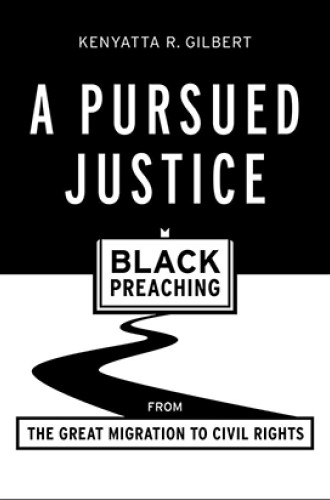Preaching in the promised land
After the Great Migration, some black preachers addressed the issues their white social-gospel counterparts avoided.
How many times must a people sing the Lord’s song in a strange land? For Americans of African descent, the answer is at least two. First they sang their sorrow songs in the Middle Passage and on the fields of plantations and in the hush-harbors of the American South, where the ways of servitude were ground into them. In the South they retained the paradigmatic sketch of a religion and a worldview that included an awe-inspiring deity and the power of nommo, the creative spoken word, which laid the groundwork for their initiation into the religion of Jesus.
More than 100 years later, fueled by Jim Crow and the promise of better wages, the descendants of slaves made another journey and learned to sing a new song in another, equally strange land. From 1916 to 1940, about 1.5 million black men, women, and children left the agricultural South in a massive, leaderless, and often desperate migration to the great cities of the North. They followed three main routes, one from the deep eastern South landing in the cities of New York, Pennsylvania, and New England; another from Alabama, Mississippi, Kentucky, and Tennessee to Chicago and Detroit, and a third from Texas and Louisiana traveling up the western coast to cities in California.
Read our latest issue or browse back issues.
This is the setting of Kenyatta Gilbert’s book. If the first step in producing an interesting book is to ask the right question, Gilbert has admirably succeeded by not limiting himself to the historical circumstances of the Great Migration, which has been superbly explored by Nicholas Lemann (The Promised Land), Isabel Wilkerson (The Warmth of Other Suns), Milton Sernett (Bound for the Promised Land), and several other writers. Gilbert’s questions are theological and homiletical: What were the yearnings and stirrings that produced the migration, and what biblical patterns gave it shape and direction? What was the black church gospel the travelers heard when they finally reached the promised land? What does Christian preaching sound like when uttered amidst the crisis of mass displacement?
Gilbert, who teaches homiletics at Howard Divinity School, deftly distinguishes between the religious options available to would-be migrants. Some of the most influential black preachers in the South, such as Charles Thomas Walker of Tabernacle Baptist in Augusta, Georgia, appealed to black southerners to stay home and rededicate themselves to the development of personal holiness and a saving relationship with the Lord. Field-weary congregants in the South, however, heard such entreaties as acquiescing to the status quo. As always, northern cities remained synonymous with freedom from the indignities and hostilities they had endured for generations.
Those who arrived in the North were met by enormous communities of black Christians. These churches were led not by the salvationist preachers they had known in the South but by progressive urban leaders who sat astride impressive—and rapidly growing—congregations. Between 1915 and 1920, Gilbert tells us, Chicago’s Olivet Baptist membership grew from 4,000 to nearly 9,000. Often the newly arrived, already facing problems of housing and jobs, found themselves in churches unprepared for the massive work of resettlement and often unwilling to accommodate the ways of their southern brothers and sisters. Still, many of the great churches, such as Abyssinian Baptist in Harlem, Pilgrim Baptist in Chicago, and East Calvary Methodist Episcopal in Philadelphia, rose to the challenge and acted as guides and gatekeepers in the ministry of assimilation. Such churches, Gilbert says, “were major power brokers in the work of meeting the physical and spiritual needs of their parishioners”—a role the black church continues to play in urban settings.
Despite the rapid change wrought in northern churches by the Great Migration, most of the preachers remained theologically conservative and salvation-centered. Gilbert notes that most black preaching fell in line with white evangelicalism and failed to leaven the message of personal salvation with the demands of social justice.
He foregrounds three exceptions whose collective voice dynamically echoed the biblical prophets and illuminated a new way of life in the promised land. Adam Clayton Powell Sr. was the pastor at Abyssinian Baptist in Harlem and a founder of the National Urban League. Florence Spearing Randolph was an organizer of the Women’s Christian Temperance Union in New Jersey and an itinerant preacher in the African Methodist Episcopal Zion tradition. Reverdy Ransom of Bethel AME in Chicago was also the founder of Chicago’s Institutional Church and Social Settlement of his denomination in 1900. His work there, drawing on methods from Jane Addams’s Hull House and Richard Wright Jr.’s social gospel, led W. E. B. Du Bois to hail Ransom’s experiment as the “most advanced step in the direction of making the church exist for people rather than the people for the church.”
Gilbert devotes the greater part of A Pursued Justice to these three preachers, along with a final chapter on the witness of Martin Luther King Jr. and others who followed him. Gilbert’s comments on Ransom, Powell, and Randolph—and on prophecy in general—are guided by the biblical and theological scholarship of Walter Brueggemann and the poetics of Zora Neale Hurston. His recipe is worth summarizing: prophetic black preaching (1) unmasks systemic evils by means of “moral suasion and subversive rhetoric,” (2) remains hopeful even in the face of tragedy and despair, (3) connects the language of the gospel with concrete strategies of change, and (4) deploys the language of change with beauty and artistry.
Gilbert’s book is an eloquent, learned, and concise introduction to the social and homiletical phenomenon of the Great Migration. I was drawn to the generous samples he provides of the sermons by his three main protagonists. If much of white social gospel preaching sidestepped issues of race, these three preachers addressed it head-on. Their sermons are marked by a rich fusion of passion and sweet rationality. Long before his son made a name for himself in Harlem, Powell demolished the notion that “the colored man was placed in America by the providence of God to teach the white man the meaning of genuine Christian love and sympathy.” Rather, he says, the whole corrupt “system” needs to be “fired and energized” by a more thorough and spiritual revolution.
In 1941, the least polemical of the three, Randolph, departed from her usual irenic approach to race relations and preached a sermon titled “If I Were White.” In it, she assails notions of white supremacy and castigates America’s whites who defend democracy around the world but deny it at home. She questions the Christianity of those who are unmoved by bad housing, substandard schools, and poor medical care for black children in her town of Summit, New Jersey. Christianity and white dominance, she argues, are incompatible. “If I were white and believed in God . . . I would speak against Race Prejudice, Hate, Oppression, and Injustice.” “If a man says, I love God, and hateth his brother, he is a liar.”
In one of his sermons, the more analytical Ransom muses on black fascination with the holiness churches: “We have tried to bind the sunlight and chain the wind to the cold and cheerless forms of Calvinism. We have caged the lark from the skies and staked the soaring eagle to the earth in the spiritual straitjacket of Puritanism, and the bloodless rationalizing of Unitarianism.” Now that Methodists and Baptists were becoming more “formal,” who can blame the youth for discarding the “dry husks of doctrines” and “empty sermons” and turning to churches that “bind less weight to our spiritual and emotional wings.” And yet, he adds,
I am here to declare redemption, salvation and deliverance, to come of old. . . . We must cast off the yoke and break the chains which for centuries have made us but mere echoes of the white man. . . . We should take the world that lies behind the barriers to which our race has been confined and make it an empire of triumphant freedom and power.
The revolutionary thinker Frantz Fanon once said that every revolution needs to create its own language. Yesterday’s words will not get the job done. Yet these preachers (and many others, like Martin Luther King Jr.) did not create a new revolutionary language. They took what the scripture and church offered them, and, like a gemologist who rotates a precious stone against the light until it gives the desired sparkle, they turned the religion of pacification they had inherited until it glowed with the gospel of liberation. It’s not hard to see that move being made in these sermons and to hear the distant voice of King and others in them.
If King, as he once said of himself, was pursued by the zeitgeist of history, these preachers prepared the way for that spirit. They continue to do so today, as the black church stands up against the challenges of urban violence and speaks out amidst new forms of racism. And as guides to those who now journey from the deeper South, might not the preachers of the Great Migration still speak to a new generation of Christians and to a church that is ever on the way?







